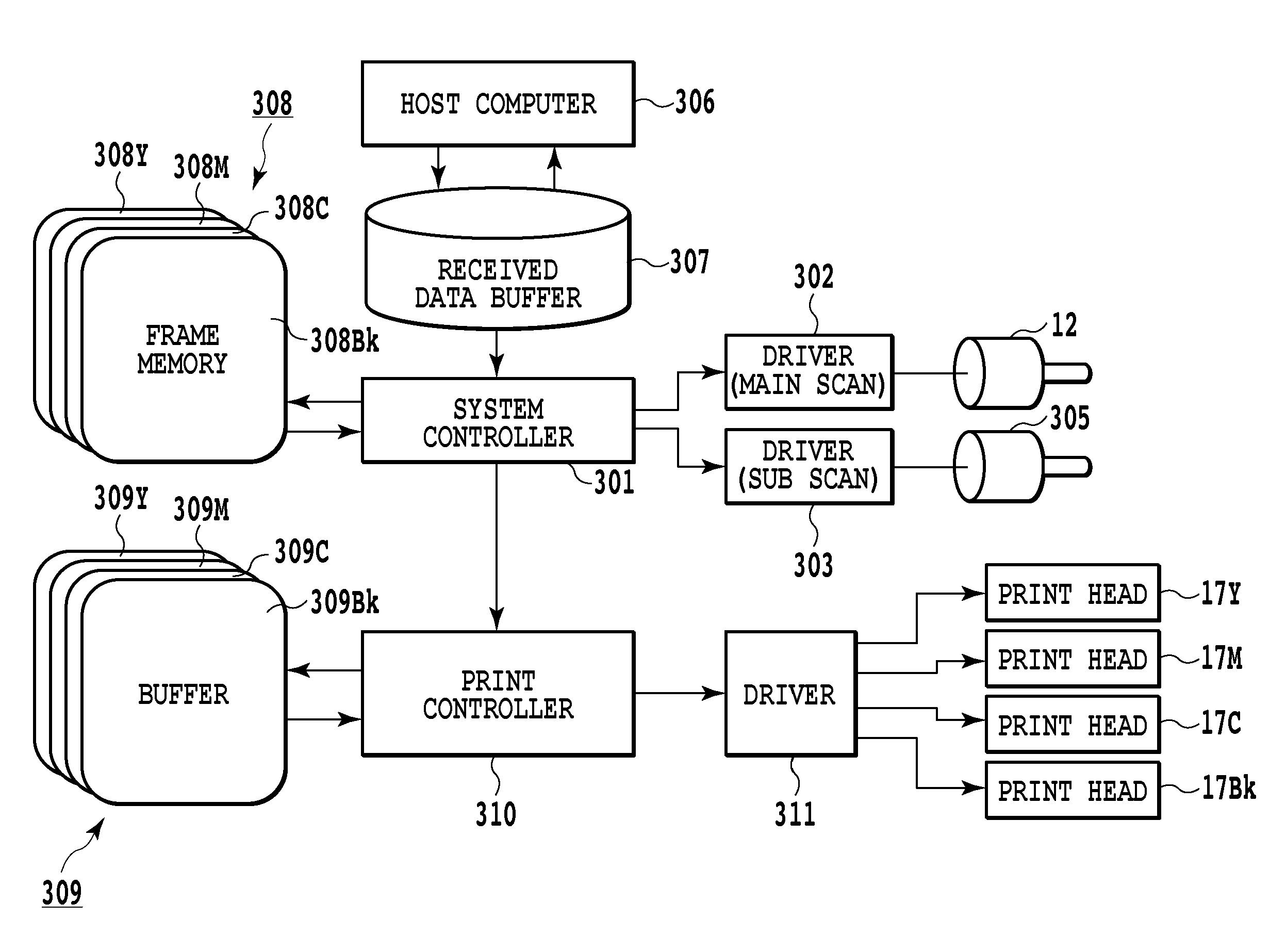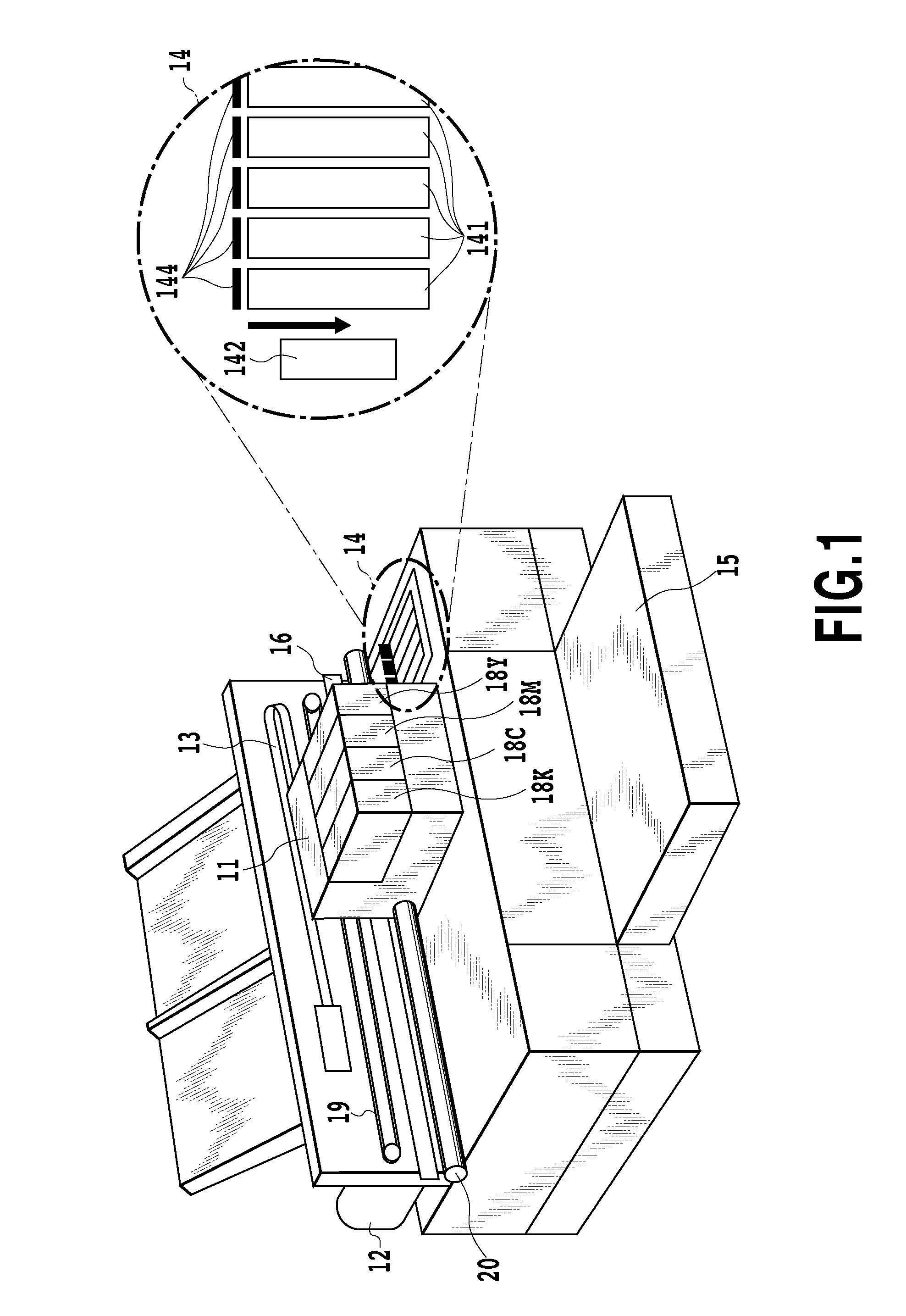Inkjet printing apparatus and inkjet printing method
a technology of inkjet printing and printing apparatus, which is applied in the direction of printing, etc., can solve the problems of inability to achieve the effect of reducing image quality, ejection failure, and deviation of ejection direction, etc., and achieves the effect of suppressing degraded image quality
- Summary
- Abstract
- Description
- Claims
- Application Information
AI Technical Summary
Benefits of technology
Problems solved by technology
Method used
Image
Examples
first embodiment
[0057]A first embodiment of the present invention generates print data for each pass in a multi-pass printing, such that the ratio of dots consecutively formed by the same nozzle during the same scan becomes greater in low-density image areas than in high-density image areas. Thus, the lengthening of nozzle nonuse time can be suppressed, even in the case of printing a low-density image in which ink viscosity increasing easily occurs due to the lengthening of nozzle nonuse time. As a result, degraded image quality due to ink viscosity increasing is reduced. More specifically, print data used for each scan of a multi-pass printing is generated from print data corresponding to dots to be formed in a pixel line area, so that the ratio of dots formed continuously by the same nozzle during the same scan from among the dots formed in a low-density image area of a given density or less is greater than the ratio of dots formed continuously by the same nozzle during the same scan from among t...
second embodiment
[0086]A second embodiment of the present invention relates to increasing the size of the mask illustrated in the first embodiment described above. In the present embodiment, the mask illustrated in FIG. 7B is taken to be a mask pattern A. This mask pattern is used together with a mask pattern B, a mask pattern C, and a mask pattern D respectively illustrated in FIG. 13. More specifically, these patterns are used repeatedly in the order A, B, C, D. Thus, the mask size becomes 64 pixels wide in the horizontal direction. In this case, when focusing on the uppermost line, for example, ejection will be performed during all passes. Thus, bias in which nozzles are used can be prevented and a uniform image can be printed.
[0087]Meanwhile, in the case of using such masks, image degradation may occur in some cases due to new nozzles being used when switching masks. FIG. 14A is a diagram illustrating the results of printing an image by using the above masks, which is of a dot arrangement given ...
third embodiment
[0091]A third embodiment of the present invention relates to a configuration that uses an ink set using light inks with lower color material concentrations than ordinary inks. In the present embodiment, light cyan and light magenta are respectively used. Light cyan and light magenta each has a lower color material concentration than the color material concentration of cyan ink and magenta ink, respectively.
[0092]In this way, in a printer that uses light inks, a typically bright image is printed by light inks and yellow ink. For this reason, low-duty images are often printed by light inks and yellow ink. Thus, the relationship between index patterns and a mask as explained in the first and second embodiments is applied only to the light inks and yellow ink. In contrast, such a relationship is not applied to other inks (dark inks), and dot arrangements and passes for printing that dots, which are effective at reducing image quality degradation caused by factors other than the above-de...
PUM
 Login to View More
Login to View More Abstract
Description
Claims
Application Information
 Login to View More
Login to View More - R&D
- Intellectual Property
- Life Sciences
- Materials
- Tech Scout
- Unparalleled Data Quality
- Higher Quality Content
- 60% Fewer Hallucinations
Browse by: Latest US Patents, China's latest patents, Technical Efficacy Thesaurus, Application Domain, Technology Topic, Popular Technical Reports.
© 2025 PatSnap. All rights reserved.Legal|Privacy policy|Modern Slavery Act Transparency Statement|Sitemap|About US| Contact US: help@patsnap.com



